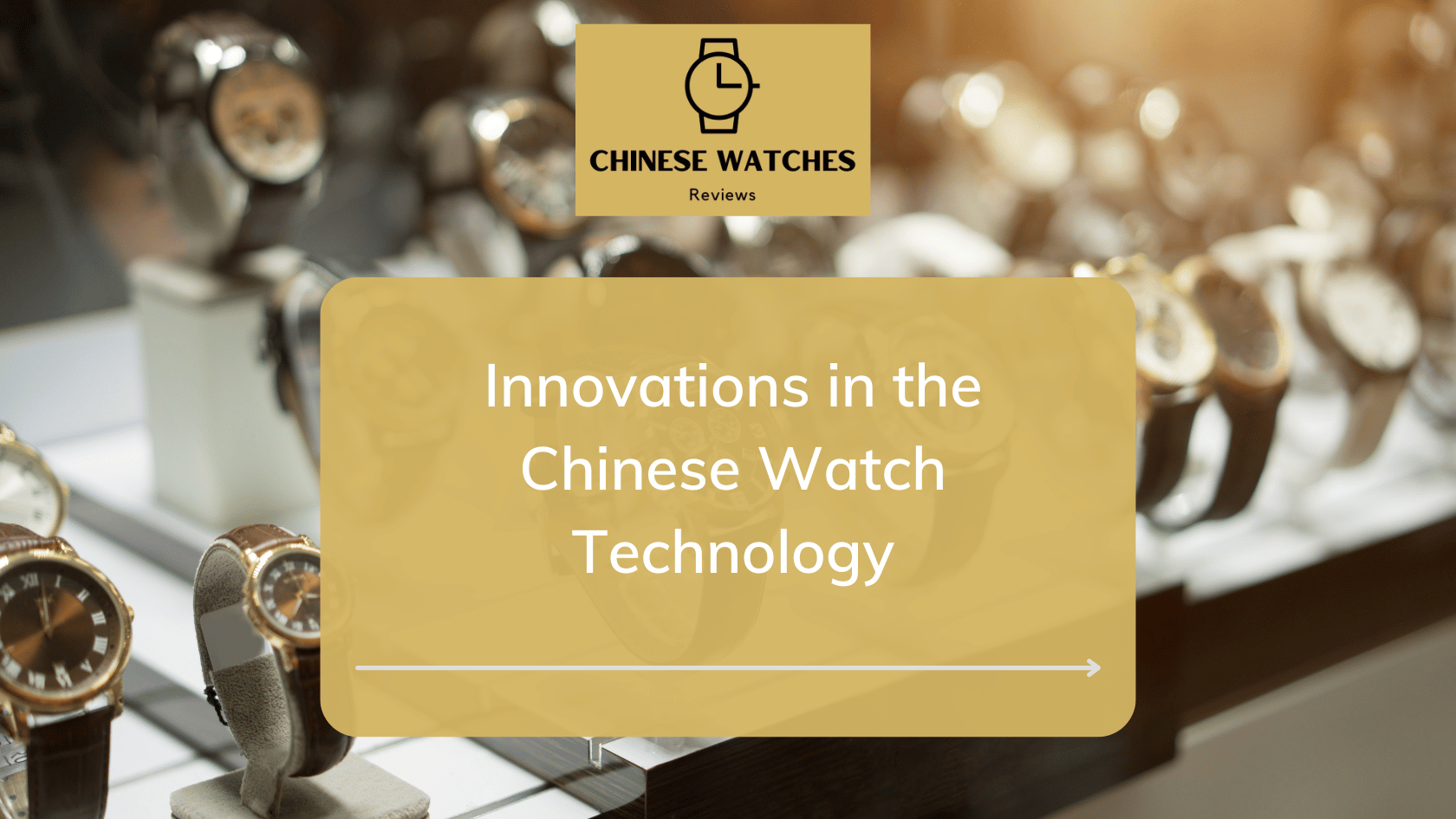When it comes to watchmaking, China often surprises with its rapid advancements and innovative spirit. Over the years, Chinese watch technology has evolved from producing basic timepieces to creating sophisticated, cutting-edge designs that rival global competitors. I’ve been fascinated by how Chinese manufacturers blend traditional craftsmanship with modern technology to produce watches that are both affordable and high-quality.
One of the most exciting aspects of this evolution is the integration of smart technology into traditional watch designs. Chinese brands are pushing boundaries by incorporating features like health monitoring, GPS, and mobile connectivity without sacrificing style. This fusion of functionality and fashion keeps me intrigued and eager to see what they’ll come up with next.
With a keen eye on sustainability, Chinese watchmakers are also exploring eco-friendly materials and production methods. These innovations not only enhance the appeal of their products but also reflect a commitment to responsible manufacturing. It’s a thrilling time to dive into the world of Chinese watch technology.
History of Chinese Watch Technology
Chinese watch technology has a fascinating history that showcases significant advancements over time. In the 1950s, China began producing mechanical watches with its first domestically-made model, the “Five-Star.” These early timepieces laid the groundwork for future developments. By the 1960s, Chinese watchmakers had introduced the ST5 movement, a pivotal innovation that demonstrated improved accuracy and reliability.
From the 1970s onwards, quartz technology revolutionized watchmaking worldwide, and Chinese manufacturers swiftly adopted these modern methods. The integration of quartz movements allowed Chinese watches to compete more effectively on the international stage, offering precision and affordability.
The 1990s marked a turning point as Chinese watchmakers began investing in both technology and design, aiming to appeal to a broader audience. Companies like Hong Kong’s Seagull emerged as major players, known for both mechanical and quartz innovations.
In recent years, China’s watch industry has seen explosive growth, driven by technological advances and strategic partnerships. This progress has put Chinese watches on par with traditional European brands. Companies now focus on smart technology, traditional craftsmanship, and sustainable practices, strengthening China’s position in the global market.
Major Innovations in Chinese Watch Technology
Chinese watch technology continues to make substantial strides. Innovations span smartwatches, mechanical movements, and manufacturing techniques, reflecting the industry’s adaptability and forward-thinking approach.
Smartwatch Advancements
Chinese companies have excelled in integrating technology with wearable design. Brands like Huawei and Xiaomi now offer smartwatches with advanced health tracking, long battery life, and seamless connectivity. By leveraging cutting-edge software, they’re making waves in the global market with affordable options that don’t compromise on features.
Mechanical Movement Improvements
Mechanical movements remain a focal point for Chinese manufacturers. Innovators like Seagull have refined their movements to achieve greater precision and robustness. The development of automatic movements with increased accuracy and reliability puts Chinese brands in line with esteemed global players, appealing to both collectors and everyday users.
Manufacturing Techniques
Chinese watchmakers adopt modern techniques to enhance quality and reduce production time. Utilization of CNC machining and laser technology ensures high precision in component manufacturing. By investing in advanced methods and maintaining cost-efficiency, Chinese manufacturers can produce high-quality components rapidly, reinforcing their competitiveness globally.
Key Players in the Industry
In Chinese watch technology, several prominent brands and innovators have emerged as pivotal figures. Their contributions have propelled the industry, combining technological prowess with design excellence.
Established Brands
Seagull Watches dominates the mechanical watch segment. Known for its intricate movements, including the renowned ST2130, Seagull stands out in precision. Another established name is Fiyta, noted for its aerospace-inspired designs. Fiyta has carved a niche with sophisticated aesthetics and reliable timepieces. Beijing Watch Factory offers elegant designs coupled with craftsmanship, often releasing limited editions that appeal to collectors. In smartwatches, Huawei has achieved global recognition, integrating advanced features at competitive prices.
Emerging Innovators
Chronosoul and Memorigin drive innovation with their unique approaches. Chronosoul focuses on eco-friendly materials, aligning with sustainable practices. Memorigin specializes in tourbillon watches, blending traditional techniques with modern artistry. CIGA Design emphasizes minimalist aesthetics and has gained international acclaim for its award-winning designs. Young brands like Zeblaze capture attention with budget-friendly smartwatches featuring cutting-edge technology, appealing to tech-savvy consumers.
Impact on the Global Market
Chinese watch technology has rapidly expanded its presence on the global stage, blending innovation with competitive pricing. The unique integration of tradition and modernity attracts consumers worldwide.
Competitive Edge
Chinese watchmakers distinguish themselves with a focus on cutting-edge features at accessible prices. For instance, Huawei’s smartwatches include health tracking and long battery life, appealing to tech-savvy users. Companies like Seagull emphasize precision in mechanical movements, maintaining reliability and affordability. These strengths allow Chinese brands to compete directly with established European manufacturers, offering similar quality at lower costs.
Market Share and Growth
The global market share for Chinese watches has been surging, driven by strategic advancements and competitive positioning. As of 2023, Chinese brands hold a significant portion of the smartwatch sector, challenging traditional market leaders. Companies like Xiaomi expanded rapidly through affordable pricing and innovative features, such as seamless connectivity. This growth trajectory indicates a shift in consumer preference, with more people opting for Chinese watches that offer advanced technology without the premium price tag.
Challenges and Opportunities
Chinese watch technology, known for its rapid advancements, faces several hurdles yet reveals promising opportunities for growth.
Innovation Barriers
Regulatory challenges often arise due to varying standards across international markets. Strict certifications and compliance requirements in different regions can slow down production, limiting global distribution. Intellectual property (IP) issues also persist, with some companies struggling to protect their innovations from being copied or infringed upon. Access to cutting-edge materials sometimes poses a problem as global supply chain disruptions can restrict availability.
Future Prospects
Despite barriers, opportunities abound as Chinese watchmakers continue to invest in technology and design. Expanding into untapped markets presents significant potential. Regions with rising incomes and a growing middle class show increasing demand for affordable luxury timepieces. Collaborations with international firms can lead to technological exchange and enhance credibility. The growing emphasis on sustainability offers a path for innovation by integrating eco-friendly practices and materials, appealing to environmentally conscious consumers.
Conclusion
Chinese watch technology has undergone a remarkable transformation, blending tradition with cutting-edge innovation. The industry’s ability to integrate advanced features into both mechanical and smartwatches has positioned it as a formidable competitor on the global stage. With a focus on sustainability and modern manufacturing techniques, Chinese brands continue to attract a diverse consumer base.
As challenges like regulatory hurdles and supply chain issues persist, the potential for growth remains strong. Collaborations with international partners and a commitment to eco-friendly practices could further enhance their global standing. The future of Chinese watchmaking looks promising, offering consumers a unique combination of quality, innovation, and affordability.

